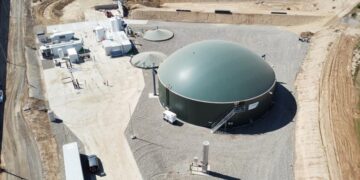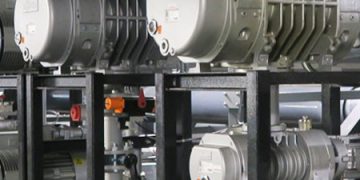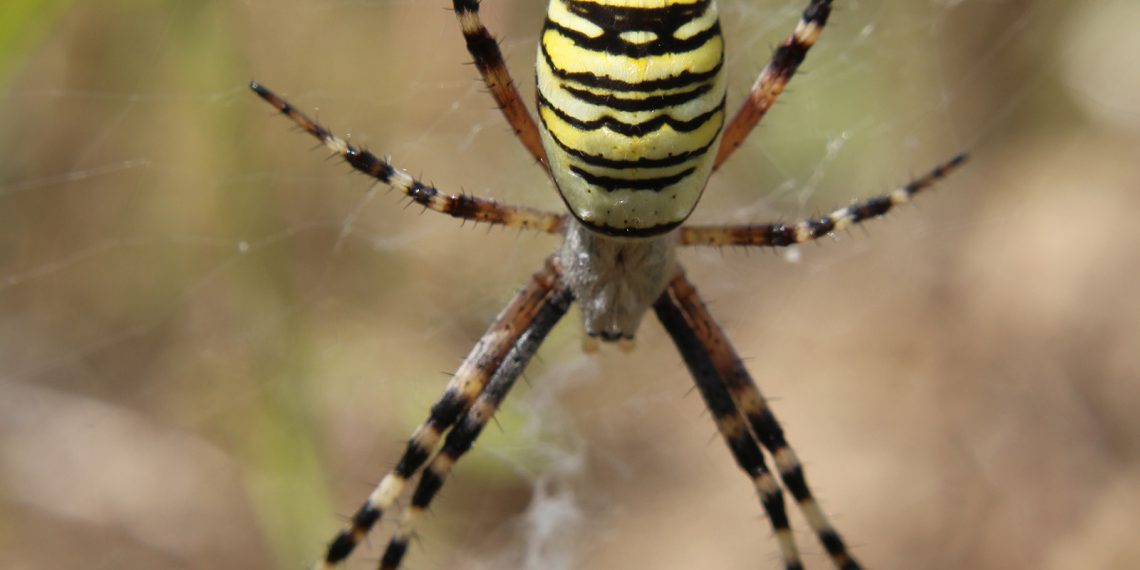The venom of a single spider can contain up to 3000 components. The components, mostly peptides, can be used to develop promising active ingredient candidates for the treatment of diseases. Spider venom can also be used in pest control — as a biological pesticide. A team of researchers from the Fraunhofer Institute for Molecular Biology and Applied Ecology IME and the Justus Liebig University Giessen is focusing on native spiders and their venom mix, which have received little attention to date. The research results on the biology of the toxins — especially on the venom of the wasp spider — have been published in scientific journals.
Spiders make many people uncomfortable, and some are even afraid of the eight-legged creatures. At the Fraunhofer Institute for Molecular Biology and Applied Ecology IME in Giessen, however, they are welcome. Here, biochemist Dr. Tim Lüddecke and his team are conducting research on spider toxins.
“Spider toxins are a largely untapped resource, this is partly due to the sheer diversity — some 50,000 species are known. There is a lot of potential in spider venom for medicine, for example in researching disease mechanisms.”
- Dr. Tim Lüddecke, head of the new “Animal Venomics” research group
For example, it is possible to study in the laboratory how individual toxins act on pain receptors of nerve cells. The venom cocktail of the Australian funnel web spider is particularly promising. It is assumed that it can be used to treat neuronal damage after strokes and to make hearts for organ transplants last longer. Other drug candidates are of interest for use as antibiotics or painkillers. “This is a very young field of research. The substances have been discovered and described, but they are not yet in the preclinical stage,” Lüddecke said. Pesticide research is a different story. Spiders stun insects with their venom and then eat them. Because the toxins are very effective against insects, they provide a good basis for biopesticides; they are suitable for crop pest control.
Research to date has focused on the toxins of the very large or potentially dangerous species that live in the tropics. The native, small and harmless spiders have not been in focus. “Most spiders in Central Europe are no more than two centimeters in size, and their venom levels were not sufficient for experiments. But now we have precise analytical methods to study even the small amounts of the previously neglected majority of spiders,” explains Lüddecke. The working group at the Giessen Bioresources branch of the Fraunhofer IME is devoting itself to these species as part of a research project. In the process, they are collaborating with research teams from the Justus Liebig University in Giessen, among others. The work is funded by the LOEWE Center for Translational Biodiversity Genomics (LOEWE-TBG) in Frankfurt am Main.
The scientists are paying particular attention to the wasp spider (Argiope bruennichi), which owes its name to its striking wasp-like coloration. They have succeeded in decoding its venom, identifying numerous novel biomolecules. The research findings were published in the journal Biomolecules.
New biomolecules from wasp spider venom
Spider venoms are highly complex, they can contain up to a maximum of 3000 components. The venom of the wasp spider, on the other hand, contains only about 53 biomolecules. It is heavily dominated by high-molecular-weight components, including so-called CAP proteins and other enzymes. As in other spider venoms, knottins are present — but these make up only a small part of the total mixture.
Knottins represent a group of neurotoxic peptides that are robust to chemical, enzymatic, and thermal degradation due to their nodal structure. One could therefore administer these molecules orally as a component of drugs without digesting them in the gastrointestinal tract. They can therefore exert their effects very well, which is why they offer great potential for medicine. In addition, knottins bind specifically to ion channels. “The more specifically a molecule docks onto its target molecule, attacking only a single type of ion channel, the fewer side effects it triggers,” explains Lüddecke. Moreover, even in small amounts, the knottins affect the activity of the ion channels, i.e., they are effective at low concentrations. As a result, derived drugs can be administered in low doses. The combination of these properties is what makes spider venoms so interesting for science.
The project partners also discovered molecules in the wasp spider’s venom that are similar in structure to neuropeptides, which are responsible for transporting information between nerve cells. “We have found novel families of neuropeptides that we have not previously seen in other spiders. We suspect that the wasp spider uses them to attack the nervous system of insects. It has been known for some time that neuropeptides in the animal kingdom are frequently converted into toxins in the course of evolution,” says the researcher.
Replicating toxins in the lab
Since the toxin yield is low in small spiders, the researchers extract the toxin glands and sequence the mRNA from them. Based on the gene structure, the toxins can be decoded. The venom profile of the wasp spider is now available in its entirety, and the next step is to produce the relevant components. For this, the gene sequence is incorporated into a bacterial cell using biotechnology, which then produces the toxin. “We are building quasi genetically modified bacteria that produce the toxin on a large scale.” Lüddecke and his team have been able to mass produce the main component of the wasp spider toxin, the CAP protein. The first functional studies will start soon.
Venom of male and female spiders differs
In another review paper, the biochemist, in cooperation with colleagues at the Justus Liebig University of Giessen and researchers at the Australian University of the Sunshine Coast, was able to deduce that spider venoms are very dynamic and that many influences shape their composition and functionality. “The dynamics of spider venom have been completely underestimated. The biochemical repertoire is critically influenced by life stage, habitat, and especially sex. Even the venom cocktail of juveniles and adults is not necessarily identical. It is rather the interaction of the many components that makes spider venom so effective than the effect of a single toxin. Through their interactions, the components increase their effectiveness,” the researcher sums up.

















